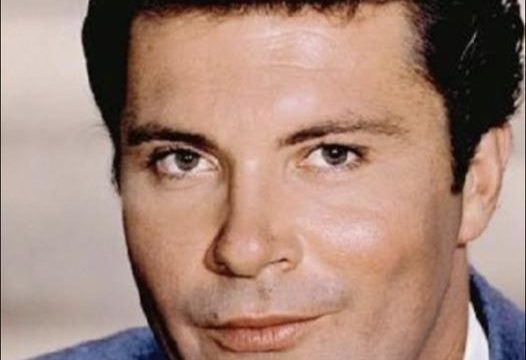Imagine stepping inside a retired airplane and finding not rows of passenger seats, but a fully functional and uniquely stylish home. That’s exactly what Bruce Campbell, a 64-year-old retired electrical engineer, has created. With a lifelong passion for invention and an eye for the extraordinary, Campbell transformed an old Boeing 727 into a remarkable home, nestled on 10 wooded acres near Hillsboro, Oregon. What began as a vision in his early twenties has become a masterpiece of innovation and creativity.

A Unique Vision Takes Flight
In his twenties, Bruce Campbell purchased 10 acres of wooded land in Oregon for $23,000 with the dream of creating something truly out of the ordinary. A tinkerer by nature, Campbell enjoyed dismantling objects and reassembling them into something new. He initially planned to use his land as the foundation for a home built from retired cargo ships, believing this concept was entirely original.
Years later, Campbell discovered he wasn’t alone in his idea. He came across the story of Joanne Ussery, a hairdresser from Mississippi who had turned a retired Boeing 727 into her home after her previous house burned down. Situated next to a tranquil river, Ussery’s airplane home inspired Campbell to shift his vision. He decided to pivot from cargo ships to an aircraft, tailoring the idea to fit his style and vision.
The Journey to Acquiring a Boeing 727
In 1999, Campbell took a bold step toward realizing his dream by purchasing a retired Boeing 727 from Olympic Airways. The cost of the plane alone was $100,000—a significant investment. However, acquiring the aircraft was only the beginning. The jet was located in Athens, Greece, and Campbell needed to transport it across continents to his property in Oregon.
Transporting the massive aircraft presented logistical challenges and came with a hefty price tag. The total cost of moving the plane, including disassembly, shipping, and reassembly, added another $120,000, bringing Campbell’s total investment to $220,000. Despite the difficulties, he considered the expense well worth it. For Campbell, the airplane wasn’t just a home—it was a symbol of ingenuity and a bold statement of sustainability.
Transforming a Jetliner Into a Home
Once the plane was delivered and securely placed on his property, Campbell began the process of turning the Boeing 727 into a livable space. The first step was to strip the aircraft of its rows of seats and other commercial airline features. He then repurposed the interior to create a home that was both functional and unique.
The airplane’s fuselage, with its cylindrical shape and large windows, offered a bright and open environment. The original cockpit remained intact, serving as a nod to the plane’s history and providing a workspace for Campbell’s technical projects. Inside, the cabin was reimagined into living areas, complete with sleeping quarters, a functional kitchen, and a bathroom. Campbell’s minimalist approach ensured the home retained much of its aviation-inspired charm while offering the comforts of modern living.
A Model of Sustainability
Campbell’s airplane home isn’t just a visual marvel—it’s also a testament to sustainable living. By repurposing a retired aircraft, he gave new life to a structure that might otherwise have been scrapped. Airplanes are built to withstand extreme conditions, making them ideal for use as long-lasting shelters. The aluminum fuselage, for example, is both lightweight and highly durable, providing excellent protection against the elements.
The use of existing airplane systems, such as lighting and ventilation, further highlights the home’s innovative design. Campbell’s efforts show how industrial materials can be adapted for residential use, offering a creative solution to housing while reducing waste.
Challenges and Triumphs
Transforming a retired airplane into a home was no easy task. From transporting the jet from Greece to reconfiguring its interior, Campbell faced numerous hurdles. Yet, his dedication and problem-solving skills allowed him to overcome these challenges, creating a home that is as functional as it is fascinating. For Campbell, the journey was as rewarding as the finished product, offering a chance to push the boundaries of traditional architecture.
A Lasting Legacy of Innovation
Bruce Campbell’s airplane home stands as a remarkable example of thinking outside the box. His project has inspired countless others to explore unconventional housing solutions and embrace sustainable practices. By turning a retired Boeing 727 into a livable space, Campbell has redefined the possibilities of home design, blending functionality with a sense of wonder.
Inside his airplane home, Campbell has created a space that reflects his passion for engineering and innovation. The combination of modern amenities and aviation history makes this home a one-of-a-kind masterpiece. For Campbell, the project represents more than just a place to live—it’s a lifelong dream brought to life and a bold expression of creativity.
Conclusion
Bruce Campbell’s airplane home is more than just a unique residence; it’s a story of imagination, determination, and sustainability. From his initial vision in his twenties to the realization of his dream decades later, Campbell’s journey demonstrates what’s possible when ingenuity meets persistence. His Boeing 727 home has become a symbol of innovation, inspiring others to see the potential in repurposing and rethinking traditional concepts of living spaces. For Campbell, the skies were never the limit—they were just the beginning.





